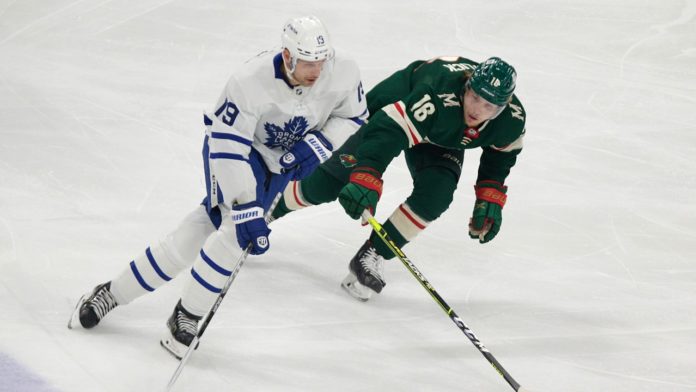
Welcome to Minnesota Wild hockey!
This was a great example of the kind of tight-checking game the Leafs will need to break through in come playoff time.
The Minnesota Wild have always done a phenomenal job of limiting shot quality at 5v5, ranking first in the NHL over the last half-decade in that department. This season, they’re in the top three again, and you can see why when Auston Matthews & Co. have trouble gaining the zone and completing plays through the middle of the ice at even strength.
The good news is that Toronto did find a way to manufacture some offense even after Minnesota fully committed to defense with a three-goal lead, dominating the second half of the middle frame. They needed a pair of power-play goals to get back in the game, but hey, we’d expect a skilled team like Toronto to nab a few points in the standings with their power play.
That obviously wasn’t the case last season, especially down the stretch. When we look at things in 2021-22, though, the Leafs rank second in the league in 5v4 shot quantity and first in 5v4 shot quality. They got a bit of puck luck in this game thanks to a Jason Spezza heater, but this is a power play that’s been sustainably generating chances. It’s earned some nights like these.
It was far from a perfect game, so to help break things down in more detail, we’ll go through each player individually as we always do. I bet you can guess who’s first.
Here we go folks, it’s time for some Leafs Report Cards!
5 Stars
Jason Spezza (C, #19) — Sometimes your league-minimum forward needs to put the team on his back.
He did score a bizarre goal from below the goal line on a lucky bounce. Then again, he also scored on a one-timer from the bumper spot on PP1 and made this gorgeous backdoor feed to Matthews from the right wall.
With Mitch Marner out of the lineup, Toronto’s power play didn’t seem to miss a beat with Spezza replacing him on the half-wall. They actually had more shooting options, which was very clear on Spezza’s one-timer from the slot. Opposing PKs give Marner that shot every day of the week, but you actually have to respect Spezza’s ability to beat an NHL goaltender clean from 30 feet out.
I have no doubt Marner will be back on the top unit when he returns to the lineup. He’s too important to this team’s long-term success to not be on their stacked PP1 unit, although his unique skillset (and flaws) force the Leafs into more of a motion-based approach with the man advantage rather than spamming one-timers like we saw in this game against the Wild.
Is it necessarily “better” to have a power play with more shot threats zipping the puck around for quick one-timers? It’s tough to say, because I love how unpredictable Toronto’s power play becomes when the Core Four are roaming around the offensive zone in different areas, keeping opposing penalty killers guessing as to who’s standing where. They’re also much more likely to get the puck below the goal line to either Marner or Nylander, which opens up more passing options for high-percentage looks.
One thing remains clear, though: Spezza can still provide big-time value offensively, whether it’s filling in spot-duty on PP1 or quarterbacking PP2 by himself with a revolving door of interchangeable forwards.
Let’s hope the injury that forced him from the game in OT was merely a stinger and not something worse. The Leafs could’ve used him in the shootout, where he presumably would’ve shot first.
4 Stars
The Czech Connection — It’s great to see Ondrej Kase back in the lineup alongside his partner in crime, David Kampf. Both players had a big impact in this game at even strength in very different ways, as always.
Kase was the offensive driver on the third line and actually got a chance to run PP2. The Leafs tried him out as the primary puck-carrier for the 5v4 zone entry and it looked pretty dangerous with Kase using his speed to fly up the ice. They’ll obviously go back to Spezza as The Guy on PP2 when Marner returns to the lineup, but it never hurts to have another skilled option for the entry, and Kase could help provide that for Toronto.
My one criticism of Kase’s game is that he might be trying to do a bit too much by himself. I have all the sympathy in the world for a guy who looks to his left, sees he’s playing alongside Engvall-Kampf, and decides to call his own number. I’d probably make the same decision if I’m flying up the ice off the rush, but at a certain point, lone wolf rushes can become predictable and easy to defend.
Kampf is actually good at transitioning the puck up the ice and through the neutral zone, which was on full display against Minnesota. It’s an attribute I’d like to see Kase take advantage of more often. We’re well aware by now just how little Kampf can provide in the offensive zone, but he can help Kase get there.
Morgan Rielly (LD, #44) — It feels wrong to give a defenseman only four stars on a night when he picked up three assists, but if you go back and watch the tape on those goals, I’d argue he wasn’t directly involved in breaking down Minnesota’s structure.
- Spezza’s lucky goal off a crazy bounce
- Simple pass to Matthews on right wall of PP1
- Simple pass to Spezza on right wall of PP1
Tyler Dellow used to write about defensemen on PP1 all the time, explaining how their job was to make a simple pass to the quarterbacks on the half-wall. It’s those players on the flanks who actually “solve” the penalty kill, which is why power-play points from defensemen tend to be super overvalued on the open market. We’ll see high point totals and assume that player is dictating offense, when really they’re just a product of their environment.
That said, Rielly had a strong game against Minnesota, advancing the puck up the ice with possession and completing passes offensively to help keep Toronto on the right side of the rink. That’s why I thought he played well, not because of three secondary assists.
Alex Kerfoot (LW, #15) — First Travis Dermott, then David Kampf, and now it’s looking like I might need to re-think my evaluation of Alex Kerfoot as a player. I quite like him in a complementary role at left wing. It allows him to use his speed more effectively in puck pursuit, which is an attribute that’s made him one of Toronto’s best penalty killers.
He’s been third on their 4v5 depth chart this season because of how well he takes away space in the neutral zone with his foot speed. With Marner out of the lineup and Kampf in the penalty box, it was Kerfoot who was called upon to be the forward on Toronto’s extended 5v3 penalty kill — and he did a fantastic job.
I always hedge these Kerfoot evaluations by mentioning his strong point production is unlikely to continue due to unsustainable puck-luck, but his stellar play without the puck is giving me reason to think he can still provide value in the top six even after his On Ice Sh% cools off a bit.
John Tavares (C, #91) — This was a bit of an off-night for William Nylander, which forced John Tavares into more of a puck-transporting role. I liked the way he was able to stick-handle through traffic in the neutral zone, helping his team get into the offensive zone with control.
When he got there, Tavares was able to work his way to the middle of the ice for a few good chances, especially on the rebound chance where he drew a penalty. He was also one of Toronto’s only players who was able to thread passes through the slot at 5v5.
And 5v4.
I’ve said it before and I’ll say it again, Tavares is such a great fit for Toronto in the middle of the ice. The Leafs have a plethora of skilled players who can make plays from the perimeter, but not as many forwards who are comfortable getting themselves to the slot for deflections, rebounds, or quick little “bump” passes like this.
Tavares continues to dominate from that spot on the ice and likely won’t be moving away from the middle of the offensive zone anytime soon.
Jack Campbell (G, #36) — One of the reasons goaltenders are so difficult to assess is because a huge chunk of their performance comes down to dumb luck. Campbell was on the wrong side of a few bad bounces in this game, which isn’t his fault, but his save percentage suffers because of it.
Since I know Twitter loves to litigate every single goal against, let’s quickly break down the three he allowed against the Wild:
- Joel Eriksson Ek deflection in front, off the post, and right onto Jordan Greenway’s tape
- Deflection off of Justin Holl in front
- Rebound bounces off of an official and right onto Marcus Foligno’s tape
There’s a reason predicting goaltender performance is damn-near impossible statistically; there’s simply too much variance with weird bounces like these. We can descriptively measure how many goals someone saves above expected, but when you take the volatility of the position into account, predicting future performance becomes a nightmare.
It’s why I don’t even pretend to understand the position half the time, and nights like these are a perfect example. Campbell played well by my eye, and allowed three goals against because… hockey. His ability to shake off those bad bounces and make the next big save at many points in the second half of the game is a credit to yet another solid performance by Soupy.
3 Stars
The Sandin-Dermott Pairing — We’ve come to expect great things from Rasmus Sandin offensively, especially in these sheltered minutes. He’s done a phenomenal job so far this season, leading the league by a long shot in the number of shots and scoring chances the team is generating when he’s on the ice. Unfortunately, he didn’t have the same kind of impact in this game, failing to create much of anything dangerous with his passing.
On the flip side, Travis Dermott is someone we don’t expect much of anything from offensively. For fun, I was looking up primary assist leaders among defensemen since 2018 and stumbled across his name — because he was dead last (2000 TOI minimum). He helps make up for his lack of offense by playing a tight gap in the neutral zone and forcing dump-ins, but at some point, his inability to complete passes in the offensive zone is something that really matters.
TJ Brodie (RD, #78) — I didn’t have too many notes on Brodie besides him blocking a few scoring chances, drawing a tripping penalty, and doing a good job of time-wasting on the penalty kill. Solid all-around game for him, but nothing to write home about.
2 Stars
Auston Matthews (C, #34) — Remember those early Hyman-Matthews-Brown lines that Mike Babcock used on the road? A Bunting-Matthews-Simmonds line runs into similar problems.
I’m well aware that Matthews scored a goal and assist with the man advantage in this game, but I’d like to focus more on his 5v5 play. We’ve seen star players like Sidney Crosby, Connor McDavid, or even John Tavares in his prime play alongside two weaker wingers who have no business playing on a top line — and still find a way to generate offense at an elite level.
Matthews wasn’t able to accomplish that in this game. With Minnesota not worrying too much about Bunting or Simmonds, the lack of spacing really seemed to clog things up for Matthews, both off the rush and off the cycle. Things got so bad that Keefe eventually tried getting Nylander a few shifts with Matthews and even stacked the top line with Tavares at one point.
That’s a nice in-game adjustment, but you’d like to see Matthews singlehandedly slice through a neutral zone trap with his combination of size, skill and much-improved speed over the offseason. It’s really hard to maneuver your way through a defense when everyone in the building knows that you’re Plan A, B, and C, but that’s also why you pay a superstar such a high percentage of your cap.
As a side note, Matthews got caught puck-watching in the defensive zone on a goal against, which has happened a few times this season.
He’s still dominating puck possession at an elite rate, but you’d like to see Matthews with his head on a swivel a bit more often in defensive zone coverage. It probably feels like I’m nitpicking — and to some extent, I am. The reason I obsess so much over these little plays is that I see Matthews as a 50-60 goal threat with physical tools that could make him a legitimate Selke candidate.
It’s an archetype we’ve never seen before in NHL history. That type of player deserves to be held to a high standard on both sides of the puck.
William Nylander (RW, #88) — This wasn’t Nylander’s best game. Aside from one strong net drive, he struggled to get through Minnesota’s defenders off the rush. I did like a few of Nylander’s passes in the offensive zone, particularly a behind-the-net pass to Muzzin for a one-timer.
That said, Nylander is paid to be a zone entry wizard in transition and create offense. He struggled to accomplish that in this game, hence the two-star rating.
Pierre Engvall (LW, #47) — I always like bringing up the large samples of evidence that indicate Engvall is a legitimate third-line NHL forward, but sometimes, third-line NHL forwards have sub-par games. This was one of those nights from Engvall, who wasn’t as threatening as usual in transition with his speed. He also got decked by Matt Dumba on the breakout.
As a quick aside, Engvall was a bystander after the whistle when Rielly took a punch to the face. I hate to sound like an old-school hockey dad, but would it kill the 6’5, 215 pound player to get in there and stand up for one of the team’s leaders? I know it’s silly and has very little tangible impact on goal differential, but it feels like one of those “culture” things where Toronto gets pushed around unnecessarily.
Like I said, stupid, but I still think some of this stuff matters.
Nik Ritchie (LW, #20) — I could compliment Nick Ritchie for winning a few 50-50 pucks on the forecheck from below the goal line and completing the next pass onto a teammate’s stick. I could also point out he played under nine minutes in a game where Toronto desperately needed offense, which says a lot about how Keefe actually values his play.
I tend to fall in a similar boat considering Ritchie is currently dead least in the NHL in Wins Above Replacement (WAR) on EvolvingHockey.com, which is a stat that tries to encompass all aspects of play. Shooting zero percent plays a major factor in that, but so does taking bad penalties and failing to impact play without scoring.
Matthews’ Linemates — When your best player runs out of time and space against one of the best defensive teams in hockey, that’s when you’d like to see his linemates make a play or two with the puck to help alleviate some of that pressure. As much as we love Wayne Simmonds, he simply doesn’t have the puck skills or passing ability to keep up with a Matthews at 5v5.
As the third-best player on a line, we’ve seen Michael Bunting make enough of those “connective tissue” passes to help keep things going for Matthews-Marner offensively. As the second-best player on a line, Bunting is asked to do a bit more as a playmaker and can’t quite break down a defense.
1 Star
The Muzzin-Holl Pairing — As exciting as this last stretch of play has been from Toronto, this “shutdown” pair is still a huge cause for concern at the moment. Jake Muzzin is still getting beat off the rush and Justin Holl is still struggling to complete breakout passes.
Last season, these two managed to put up great results despite facing some of the toughest competition in hockey. This season, Toronto’s coaching staff is giving them some easier minutes because of their struggles and they’re still getting outplayed at even strength.
Considering Holl’s value on the trade market right now relative to the actual on-ice value he’s providing, I’d the pull the trigger on some kind of deal to recoup assets if I’m Kyle Dubas right now. When you adjust for context (i.e. playing with Toronto’s Top 6 and Jake Muzzin), the results at HockeyViz.com indicate that Holl has been an anchor at even strength over the past two seasons.
Muzzin hasn’t exactly helped matters this year coming off of another injury, but at least with him, we know there’s a long track record of strong 5v5 results regardless of who his partner is.
This begs the question: what would a Muzzin-Liljegren pair look like if they got an extended look for 10 games? My guess is they’d perform better than what we’ve seen from Muzzin-Holl this season.
Incomplete
Joey Anderson (RW, #20) — Let’s call this one an “incomplete” since he only played 3:53 against the Wild as a result of Keefe’s line shuffling and the team trailing for chunks of the game. I don’t think anyone can make a fair assessment based on that sample.
Heat Map
Here’s a quick look at where each team’s shots were coming from at even strength, courtesy of Natural Stat Trick.
Toronto generated slightly more shot quantity than Minnesota (52%) but lost the shot quality battle, only controlling 45% of the scoring chances and 48% of the expected goals.
For anyone wondering, the xG on that Spezza shot from below the goal line was 0.01 — it had a 1% chance of going in.
Game Score
Game score is a metric developed by The Athletic’s Dom Luszczyszyn to measure single-game performance. You can read more about it here.
Tweets of the Night
You watch hockey for "scoring goals" and "offense".
I watch hockey for "preventing goals" and "defense".
We are not the same.
— EvolvingWild (@EvolvingWild) December 5, 2021
Welcome to Minnesota Wild hockey. It sucks here.
Holy crap Matthew Knies pic.twitter.com/WMpRvI9Y0Z
— Internet #BlackLivesMatter (@cjzero) December 5, 2021
Between him and Topi Niemala tearing up their respect leagues, the Leafs might actually have some decent prospect depth you weren’t expecting. Despite their limited draft capital, they’ve been able to find some good bets in the later rounds.
Can't help but wonder what might have been if they'd put Spezza in that spot on the powerplay in the playoffs last year instead of going back to Thornton over and over again.
— draglikepull (@draglikepull) December 5, 2021
I’ll never understand why the Leafs’ brass thought Joe Thornton in the bumper spot of PP1 would work last year, especially when you have Spezza and Nylander sitting on the bench.
Every Leafs fan remembers that Jason Spezza was scratched for opening night in 2019.
But do you know what the 4th line was that night?Timashov – Shore – Gauthier. He didn't play over Dmytro Timashov, Nick Shore, or Frederik Gauthier.
— Kevin Papetti (@KPapetti) December 5, 2021
But at least it wasn’t as dumb as nearly ending Spezza’s career just to stick it to your general manager.


![Jim Montgomery Post Game, Bruins 4 vs. Leafs 2: “[Marchand] still manages to get under people’s skin, yet he doesn’t cross the line” Jim Montgomery, Boston Bruins post game](https://mapleleafshotstove.com/wp-content/uploads/2024/04/jim-monty-pg-to-218x150.jpg)






















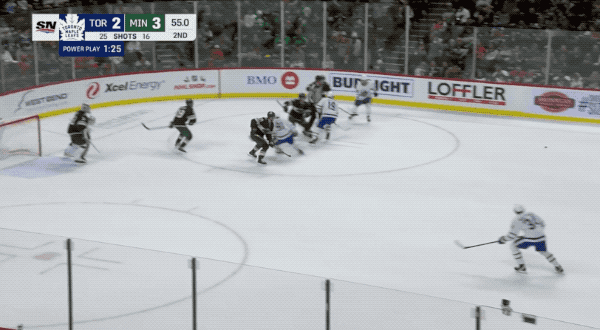
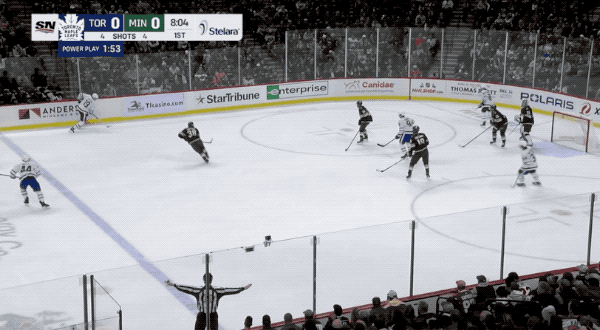
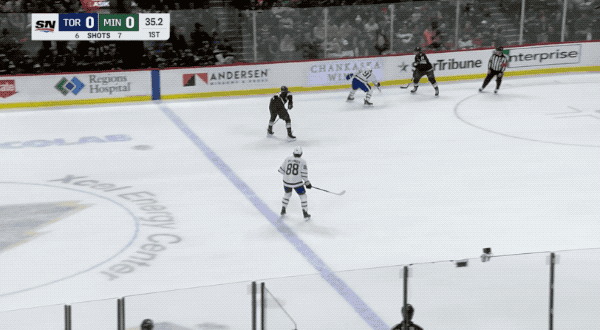
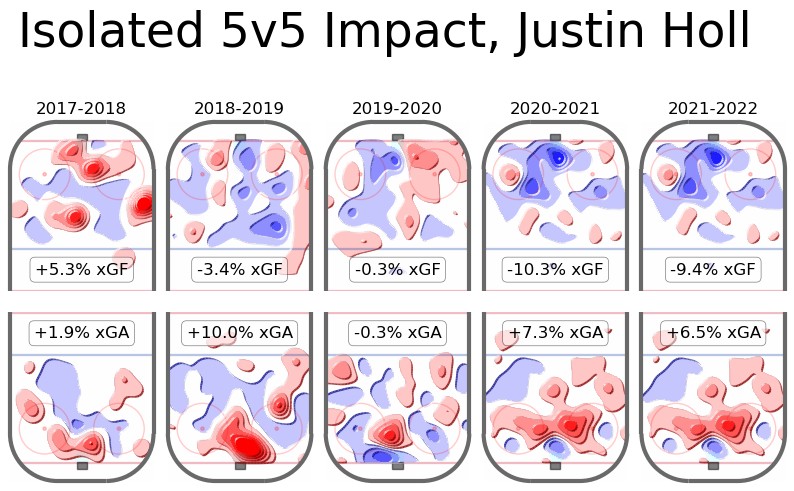
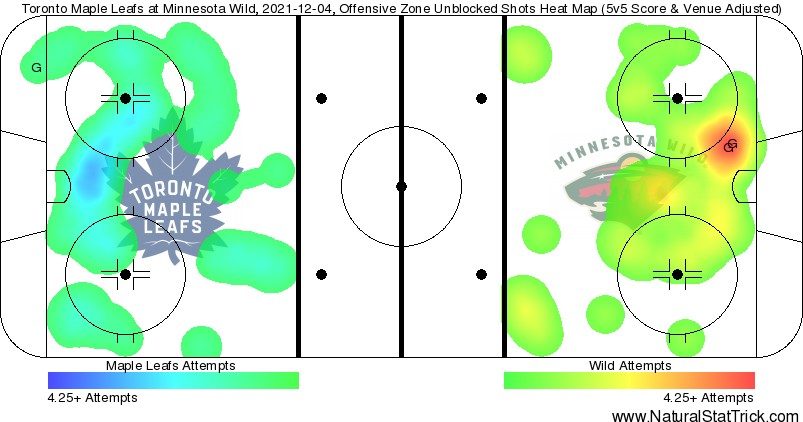
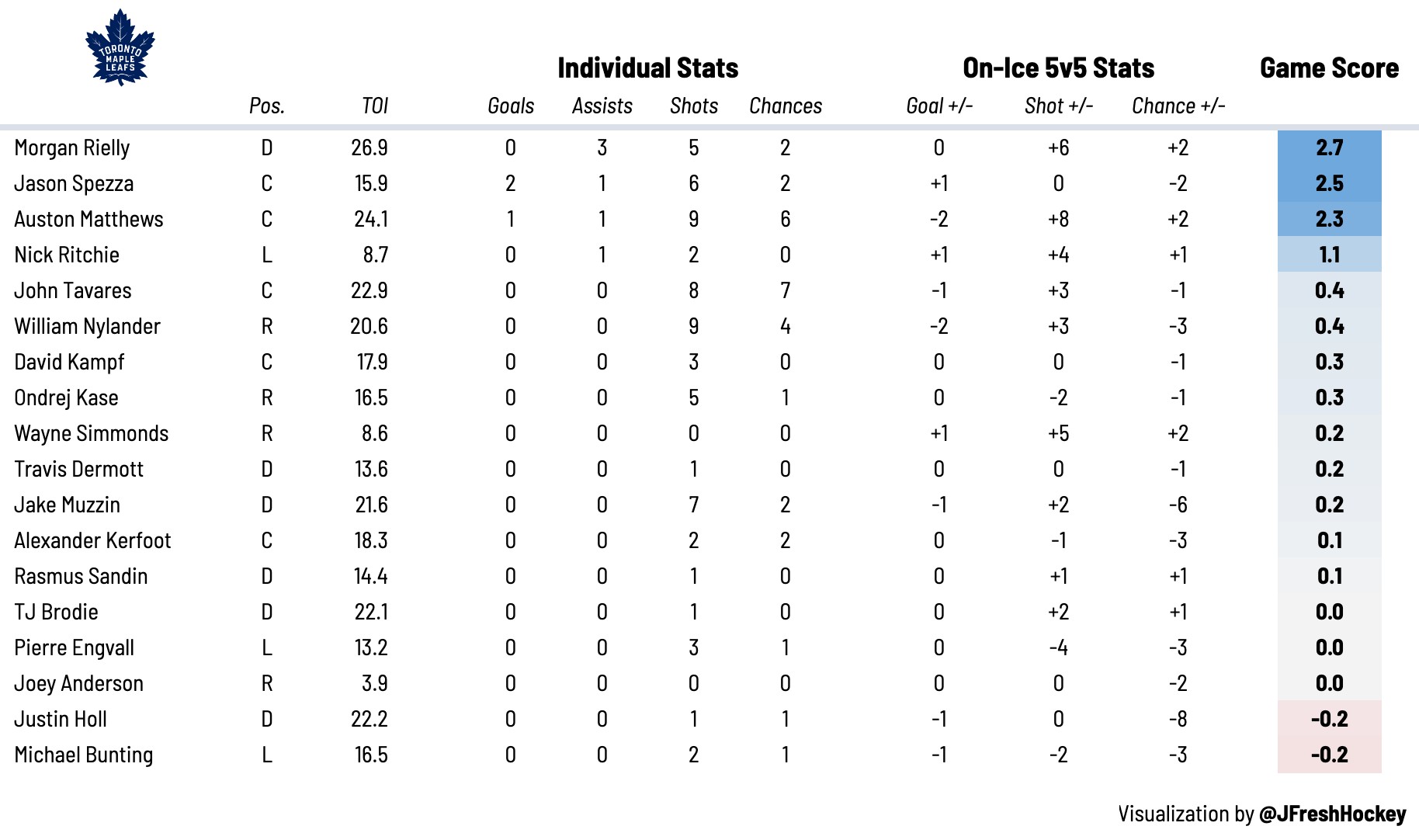

![Jim Montgomery Post Game, Bruins 4 vs. Leafs 2: “[Marchand] still manages to get under people’s skin, yet he doesn’t cross the line” Jim Montgomery, Boston Bruins post game](https://mapleleafshotstove.com/wp-content/uploads/2024/04/jim-monty-pg-to-100x70.jpg)







